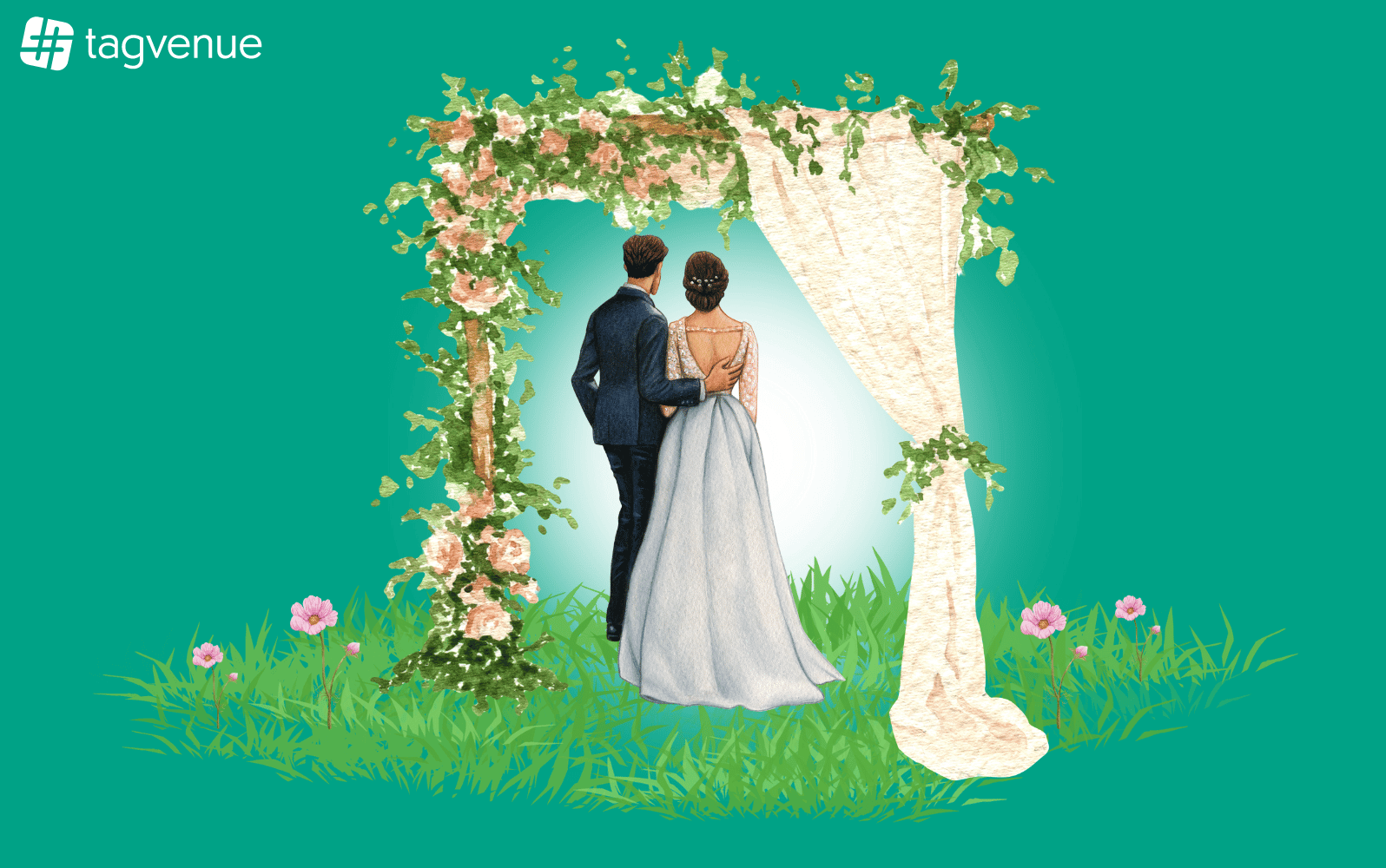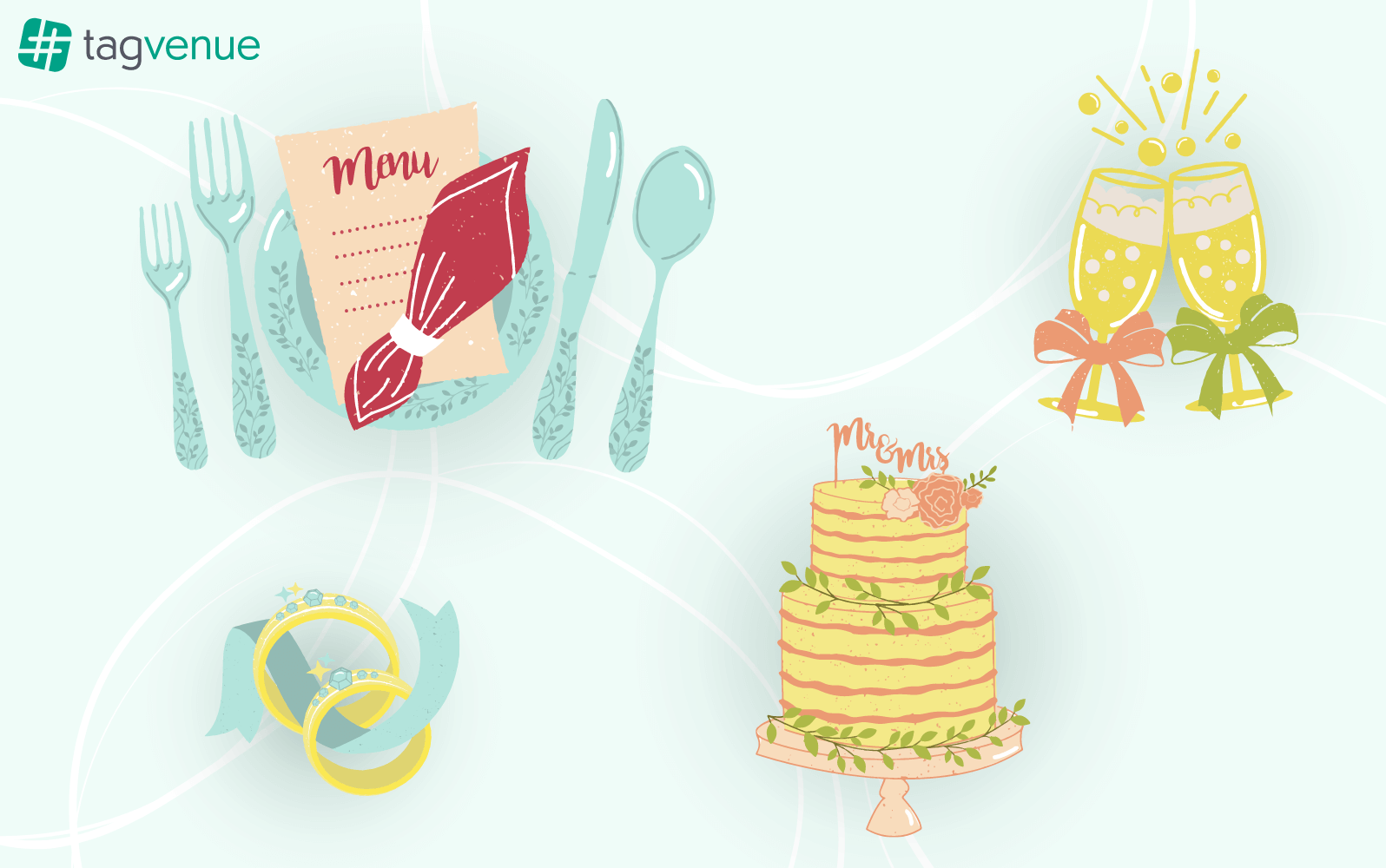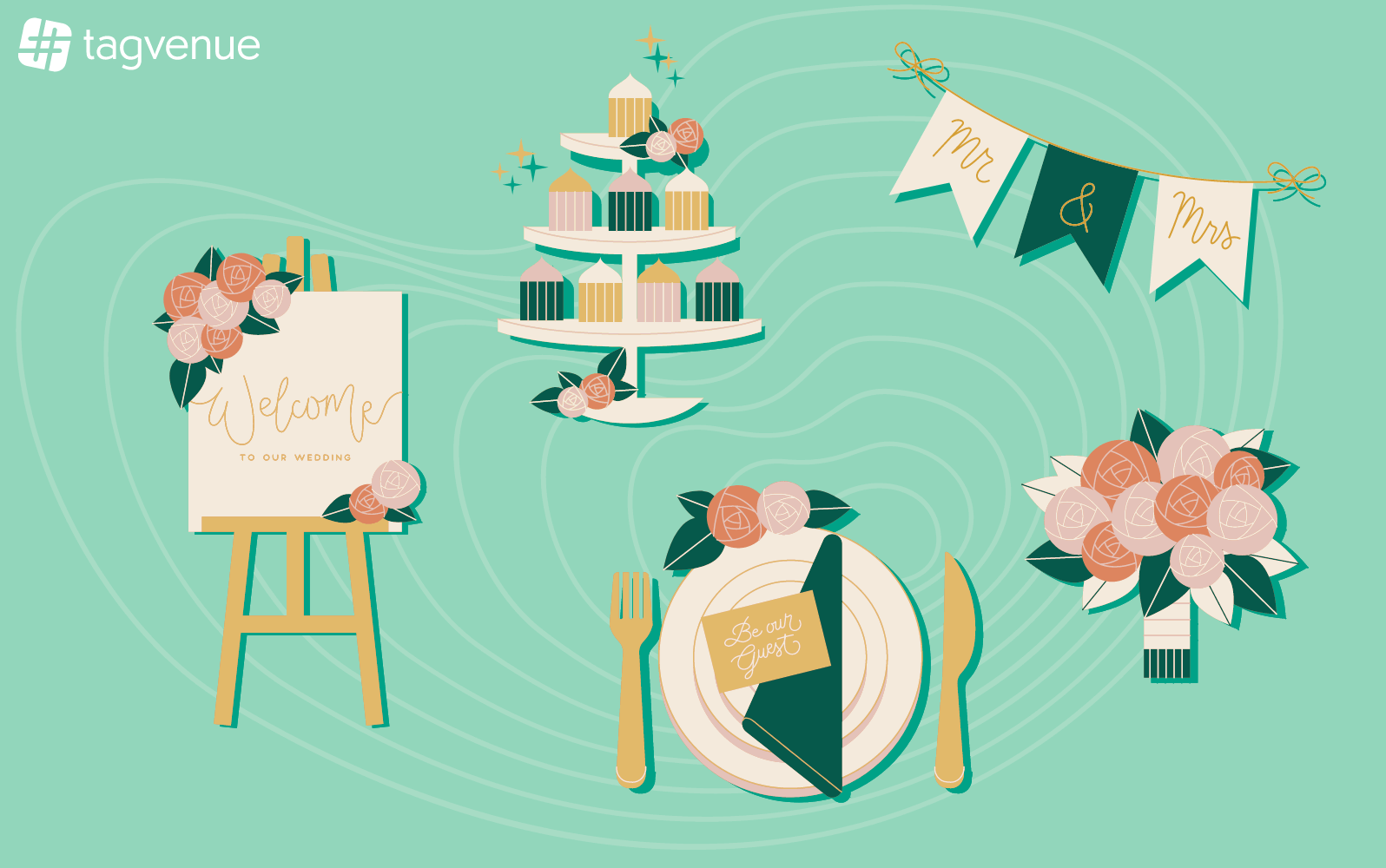5 Inspired Wedding Seating Arrangement Ideas for Your Big Day
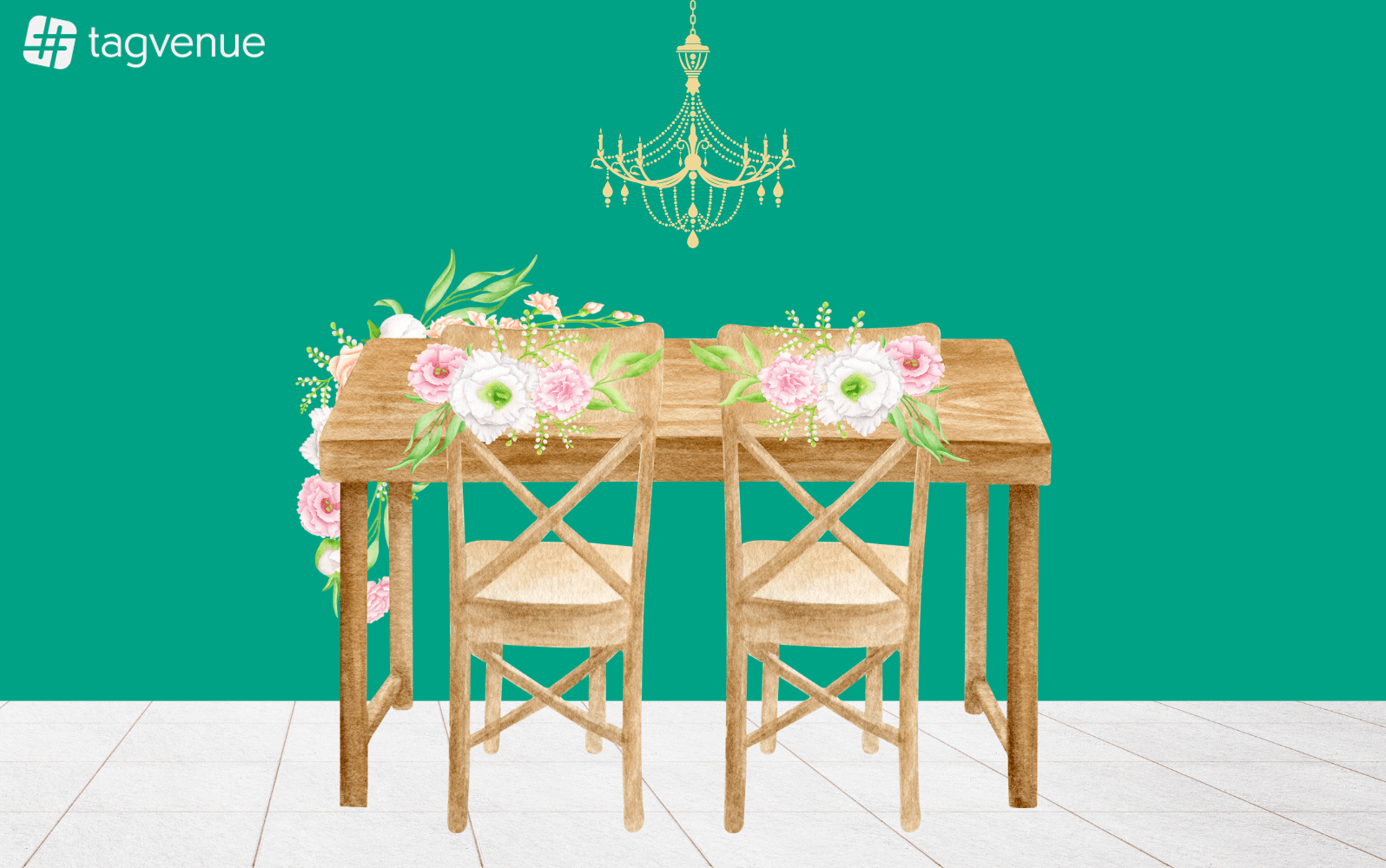
Planning a wedding involves making many decisions, and among those decisions are details such as choosing the right wedding seating arrangement.
Seating is a crucial element of any wedding, as it offers an opportunity to inject your personality, style, and theme into your big day. Finding the perfect layout is a bit like choreographing a dance: it’s all about creating harmony, ensuring the rhythms of conversation flow as smoothly as the wine, and that each guest feels like they’ve been given a front-row seat to your love story.
As a wedding planner and owner of BusyBrides, I’m delighted to share five wedding seating arrangement ideas to help you make your special day all the more memorable. Let’s waltz through some inspiration together!
🪑 Round Banquet Tables
Classic banqueting seating is a timeless choice, giving your wedding guests an excellent social space to interact with one another and engage in cherished conversations.
However, if you’re going to have a round top table, I would highly recommend that you sit outside so that you can engage with your guests around you and at least have meaningful eye contact with those you can’t talk to directly. It’s preferable to avoid sitting in the centre with your back to the guests, isolated from natural interactions.
If you really want a round table, I suggest having a smaller number of people seated at the top table to facilitate a more effortless and inclusive interaction with a broader array of guests, eliminating the barrier created by having individuals seated directly opposite you. To distinguish the table as a focal point, adorn its ledge with flowers or other decorative elements.
In scenarios where space is abundant, consider the elegance of a long top table or a sweetheart table. These options exude a charming allure, providing a conventional and structured classroom-style seating layout that enhances the overall aesthetics and functionality of the setting.
👍 Pros: This layout facilitates social interaction between guests.
👎 Cons: It may be difficult for the couple and guests to interact with people seated at different tables.
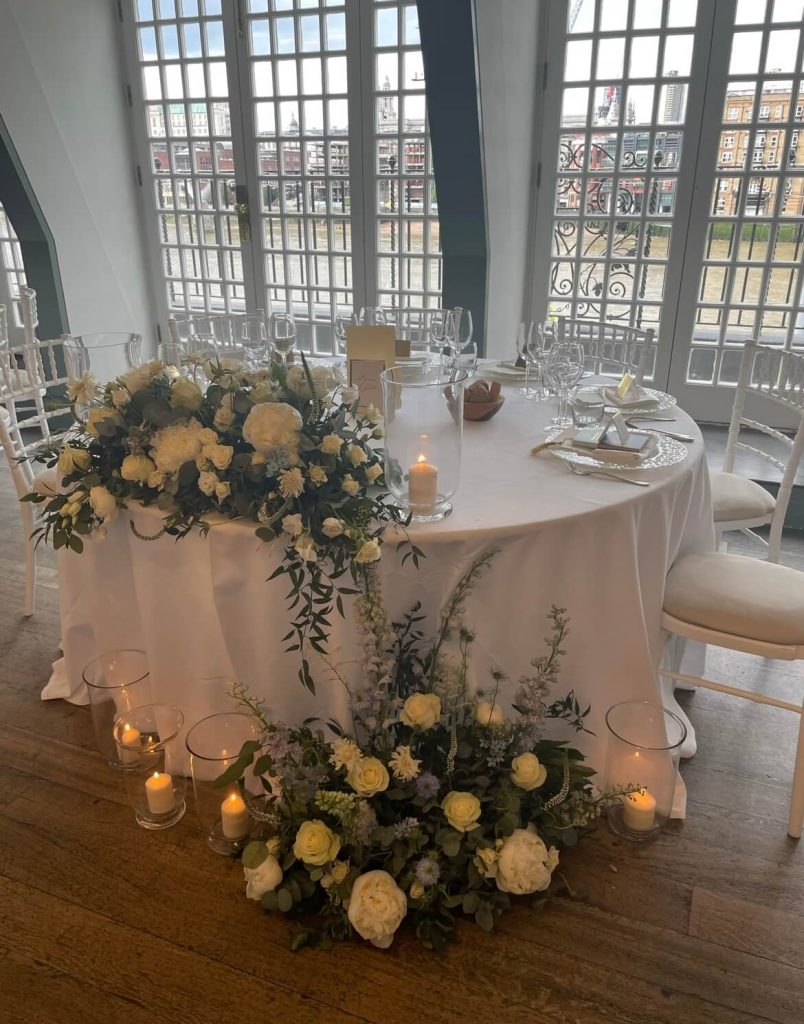
🪑 Long Banquet Tables
Long banquet tables, also known as family-style seating, hold a special place in my heart, particularly due to the immense design flexibility they offer. You can be so much more creative with these compared to round tables, plus, this arrangement allows you to accommodate more guests comfortably.
For those mindful of budget and inclined towards DIY aesthetics, long tables emerge as a remarkably practical choice. They allow for the creation of a striking design presence, even with more modest decorative accents. In contrast, round tables might require a larger display to capture attention, and smaller arrangements may risk being overshadowed by the overall ambiance.
👍 Pros: Long tables are a practical choice that allows for flexibility and creativity.
👎 Cons: This wedding table layout requires more space compared to round banquet tables.
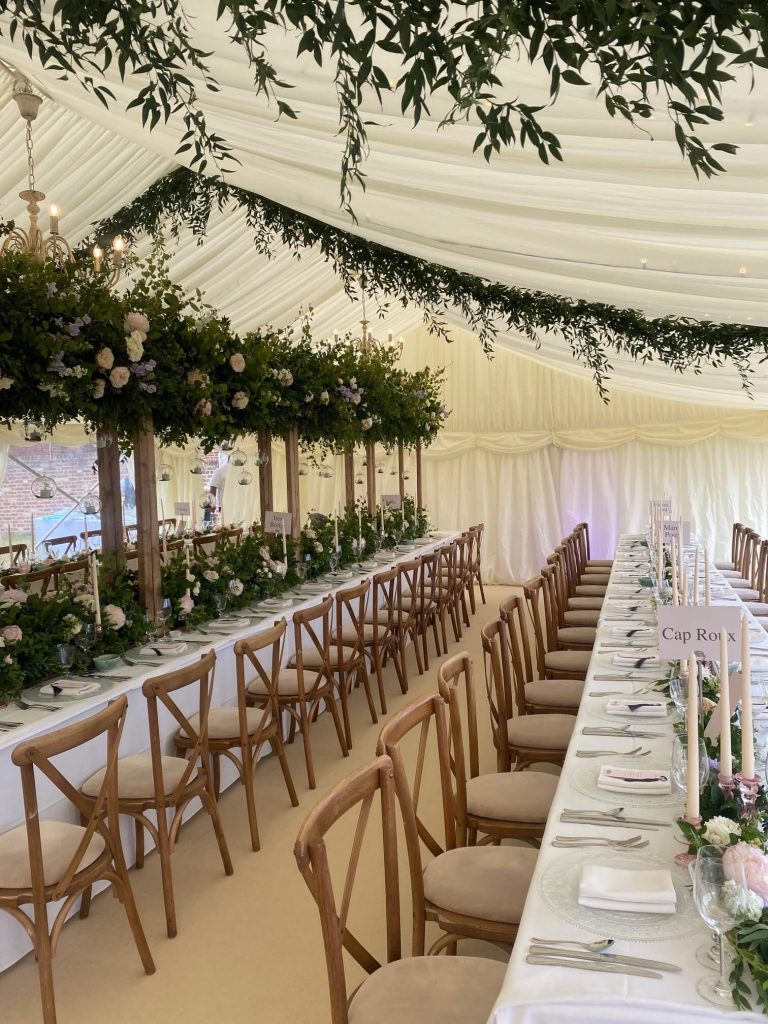
🪑 Theatre-Style Seating
Theatre-style seating is exceptionally effective for wedding ceremonies, offering an optimal layout that combines both formality and intimacy. When space allows, I like to curve the chairs subtly to add a touch of unique styling. This nuanced adjustment not only enhances the visual experience but also fosters a sense of inclusivity among the guests.
Ultimately, employing a theatre-style layout with a creative curvature ensures maximised use of available space, contributing to a beautifully orchestrated ceremony.
👍 Pros: This type of seating easily accommodates a large number of guests.
👎 Cons: It may be harder for people sitting in the back to see all the details of the ceremony.
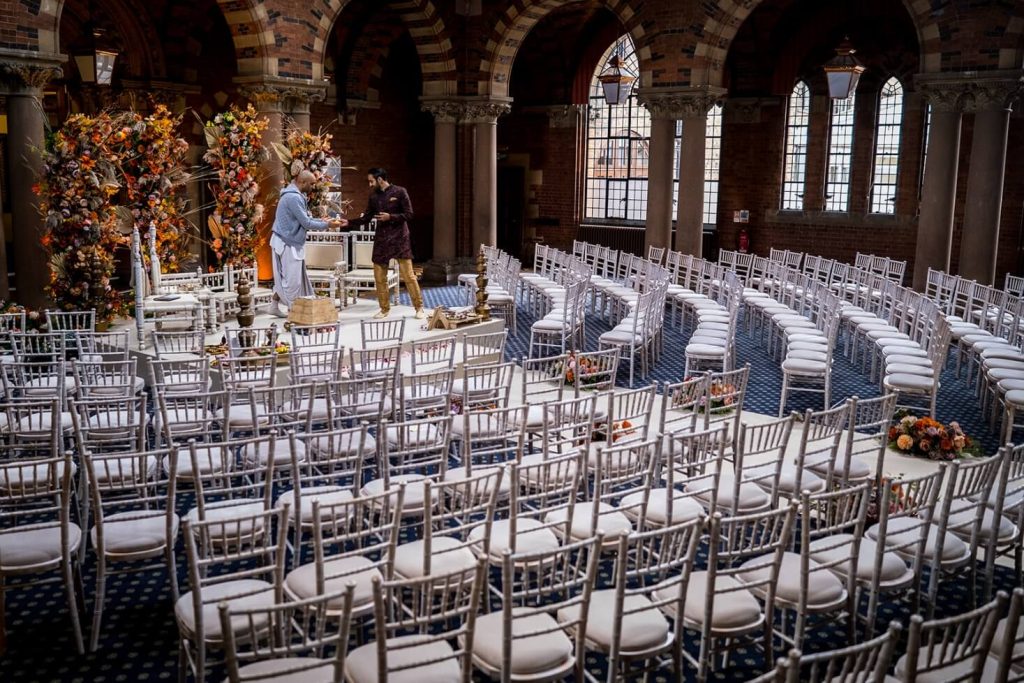
🪑 Conference Seating
Conference seating might not be a typical choice for weddings, but it’s one that certainly deserves consideration! I recently had the pleasure of orchestrating a stunning wedding at the Banking Hall, where we embraced this unconventional style. We paired two rectangular tables together, a setup often seen in conferences, and the result was uniquely captivating.
This layout looked fresh and original, demonstrating that such an arrangement is not merely confined to corporate settings. It can be an excellent option for those seeking something out of the ordinary for their special day.
I would love to see this design incorporated more frequently in weddings. However, it’s worth noting that finding a venue with the requisite space and appropriate table availability to offer this setup might be a challenge.
👍 Pros: This unconventional layout will make your wedding stand out.
👎 Cons: You’ll need a spacious venue to pull this off.
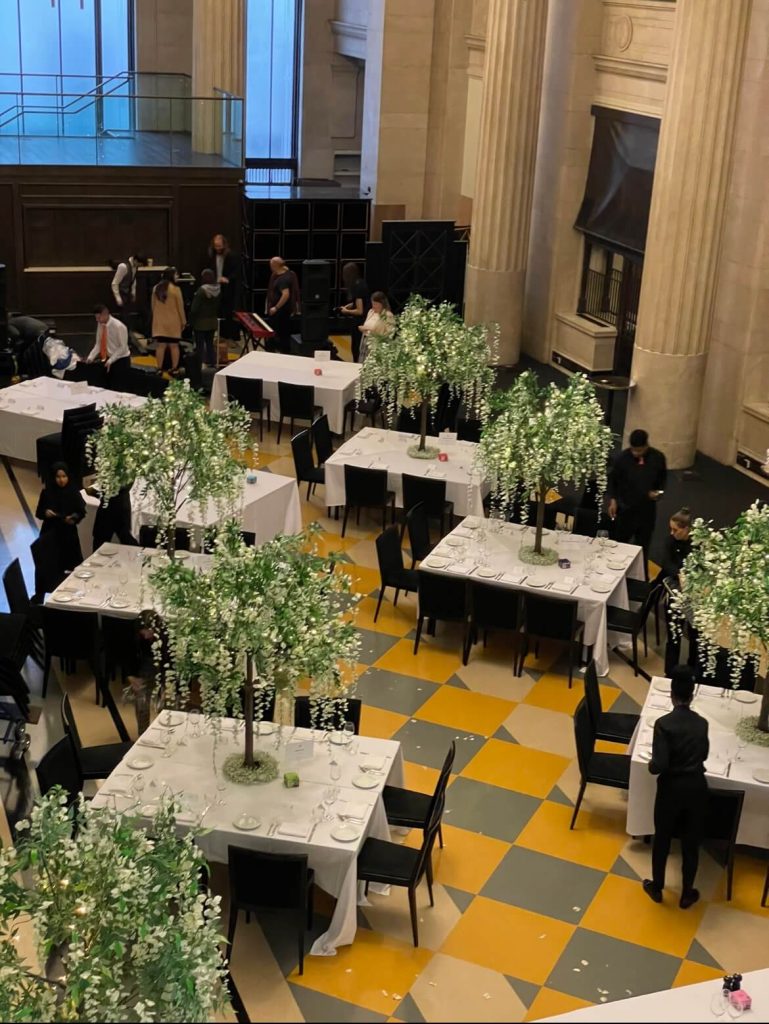
🪑 U-Shape Seating
Opting for a U-shape seating layout can be a remarkable choice, especially for small weddings. Recently, I had the pleasure of organizing two such delightful weddings, where the guest counts were 30 and 36, respectively. In both instances, the U-shape layout significantly enhanced the aesthetic appeal of the setting, emanating an aura of elegance and warmth.
This configuration not only facilitates a closer and more personal interaction with the guests but also maintains the prominence and distinctiveness of the top table, ensuring that the celebratory ambiance is intimate yet sophisticated.
👍 Pros: Creates an intimate ambiance and fosters social interaction between guests and the couple.
👎 Cons: This layout works best for smaller weddings.
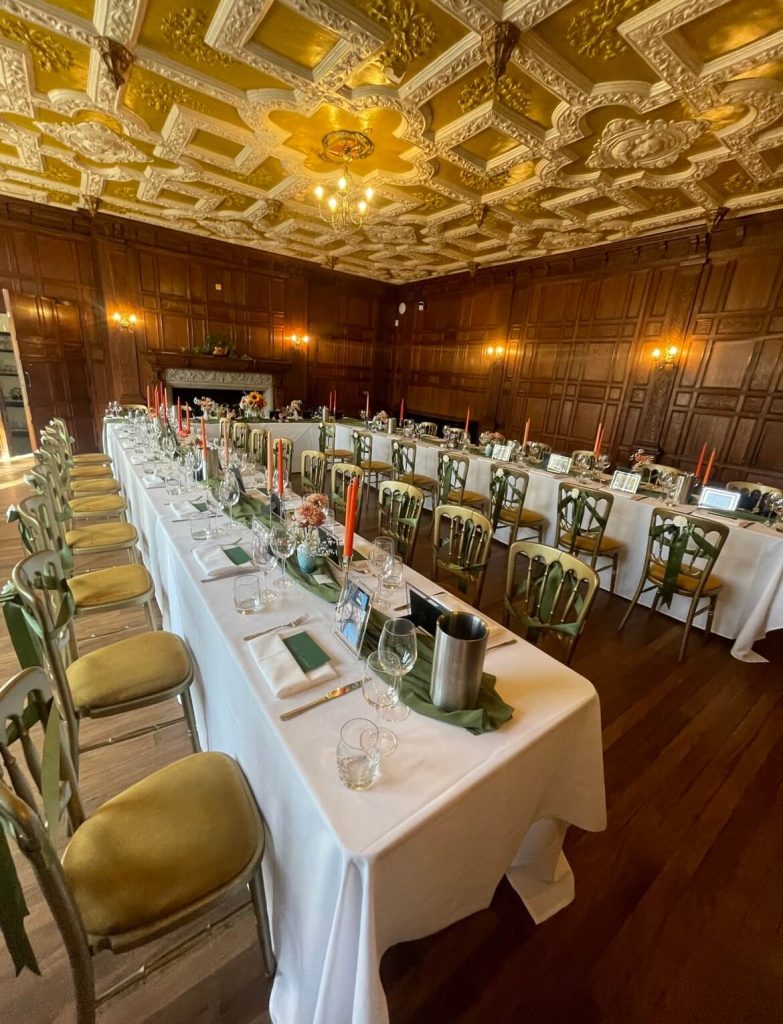
🪑 Cocktail-Style Seating
The cocktail-style arrangement is splendid for both reception drinks and the evening festivities of weddings. This style fosters a vibrant, sociable atmosphere, encouraging guests to mingle freely rather than remain seated.
Post-breakfast, it’s a wonderful strategy to transition into a lively cocktail hour. I usually gently prompt guests to rise from their seats, subtly tucking their chairs away. This nudge often inspires them to stay on their feet, engaging more openly and making the most of the celebratory ambience. It enhances the overall conviviality and interactive spirit of the evening’s celebrations.
👍 Pros: Promotes a lively atmosphere perfect for mingling.
👎 Cons: This arrangement won’t work if you want to serve a full meal.
👰 You may also like: How to Choose a Wedding Venue: The Complete Guide
💡 Bonus: Planning Tips
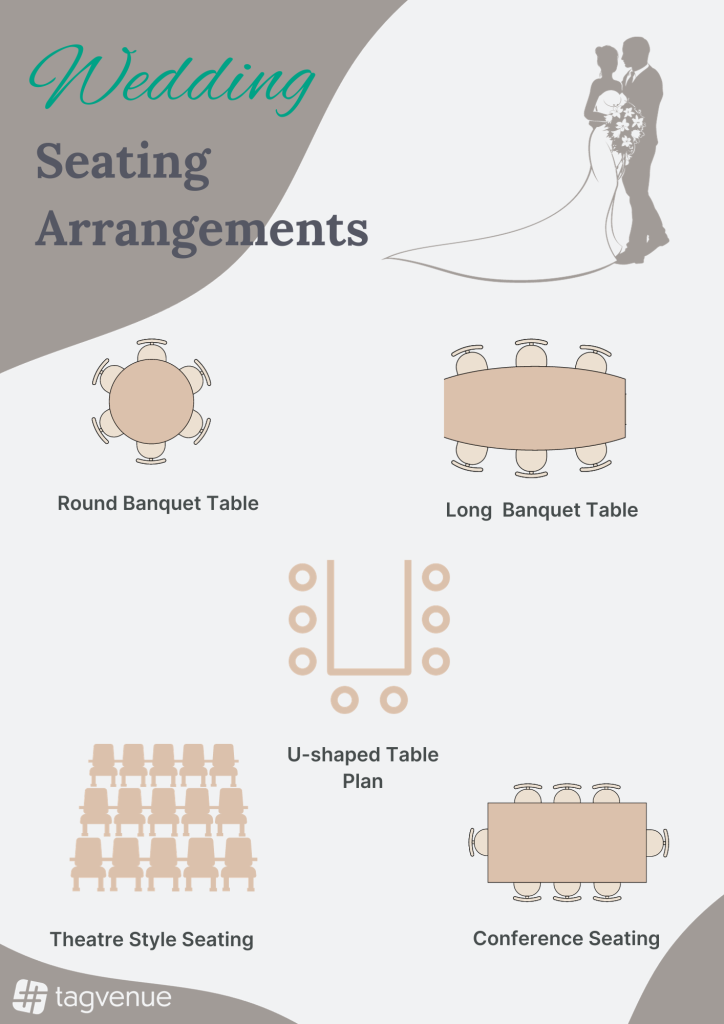
To top it off, here are a few exclusive tips not just to craft a flawless seating plan but also to orchestrate your wedding day with utmost precision and efficiency.
Wedding Seating Chart
Having a well-thought-out seating plan is essential for maintaining a sense of order and harmony on your wedding day, regardless of the wedding size. It ensures that you share your most heartfelt moments with those closest to your heart.
I always advocate for a meticulous seating plan – not just for the reception but also for the ceremony. Prioritise immediate family and the bridal party, clarifying their designated seats. This pre-planning mitigates confusion and prevents a chaotic atmosphere, allowing guests to settle into the ceremony’s flow without hesitation or doubt.
However, while the seating plan is important, it’s also valuable to leave room for some flexibility. Allow guests the liberty to choose their seats at the assigned tables. As a couple, your preferences are paramount, but the joy and comfort of your guests are instrumental in crafting a delightful collective experience.
Obsessing over every seating detail can be draining. Simplify the process by assigning groups to tables, then allow them to select their specific seats. For enhanced interaction with your guests, allocate time for mingling, whether during the reception drinks or brief interludes between meal courses.
Make the Most of Your Day
Your wedding breakfast is not just a meal; it’s a significant, multifaceted investment involving various elements like food, drinks, decor, and more. Rushing through this meticulously planned and costly segment of the day can overshadow its value.
To manage time effectively and ensure every detail is savoured, consider scheduling your ceremony earlier. This adjustment allows ample time to relish the wedding breakfast and transition smoothly into the evening festivities, ensuring that every precious moment and investment is cherished and celebrated to the fullest.
Conclusions
Crafting the perfect seating arrangement is an art – one that significantly influences the atmosphere and flow of your wedding day. Armed with these insightful tips and ideas, you are now poised to curate a seating plan that harmonises with your vision, nurtures guest interaction, and elevates the overall wedding experience. May your special day unfold with grace, joy, and beautiful memories woven into the tapestry of love and celebration. Happy planning! 💐
FAQ
What is the proper seating arrangement for a wedding?
The proper seating arrangement for a wedding varies based on cultural and personal preferences. Generally, couples opt for a combination of different seating styles like banquet, theatre, or cocktail style, among others. A well-considered seating plan should facilitate guest interaction, honour traditions, and contribute to the overall flow and aesthetics of the event.
Who sits at the top table at a wedding?
Traditionally, the top table at a wedding is reserved for the couple and key members of the wedding party, such as parents, the best man, and the maid of honour. However, modern weddings often see a variety of configurations, reflecting the couple’s personal preferences and family dynamics.
Where do parents sit at the wedding reception?
Parents typically sit close to the bride and groom at the wedding reception. They may be seated at the top table or at adjacent tables, depending on the couple’s preferences and the overall seating arrangement. It’s customary to honour parents with prime seating that allows them to fully engage in the celebration.
Who sits next to the bride and groom?
Usually, the maid of honour sits next to the groom, and the best man sits next to the bride. However, couples can choose a seating arrangement that best suits their comfort and relationship with the wedding party members, allowing flexibility in tradition.
How do you list guests on a wedding seating chart?
Guests can be listed on a wedding seating chart alphabetically by last name or grouped by relationship or affiliation, such as family, friends, or work colleagues. Ensure that the chart is clear, readable, and logically organized to facilitate a smooth seating process and a comfortable guest experience.
